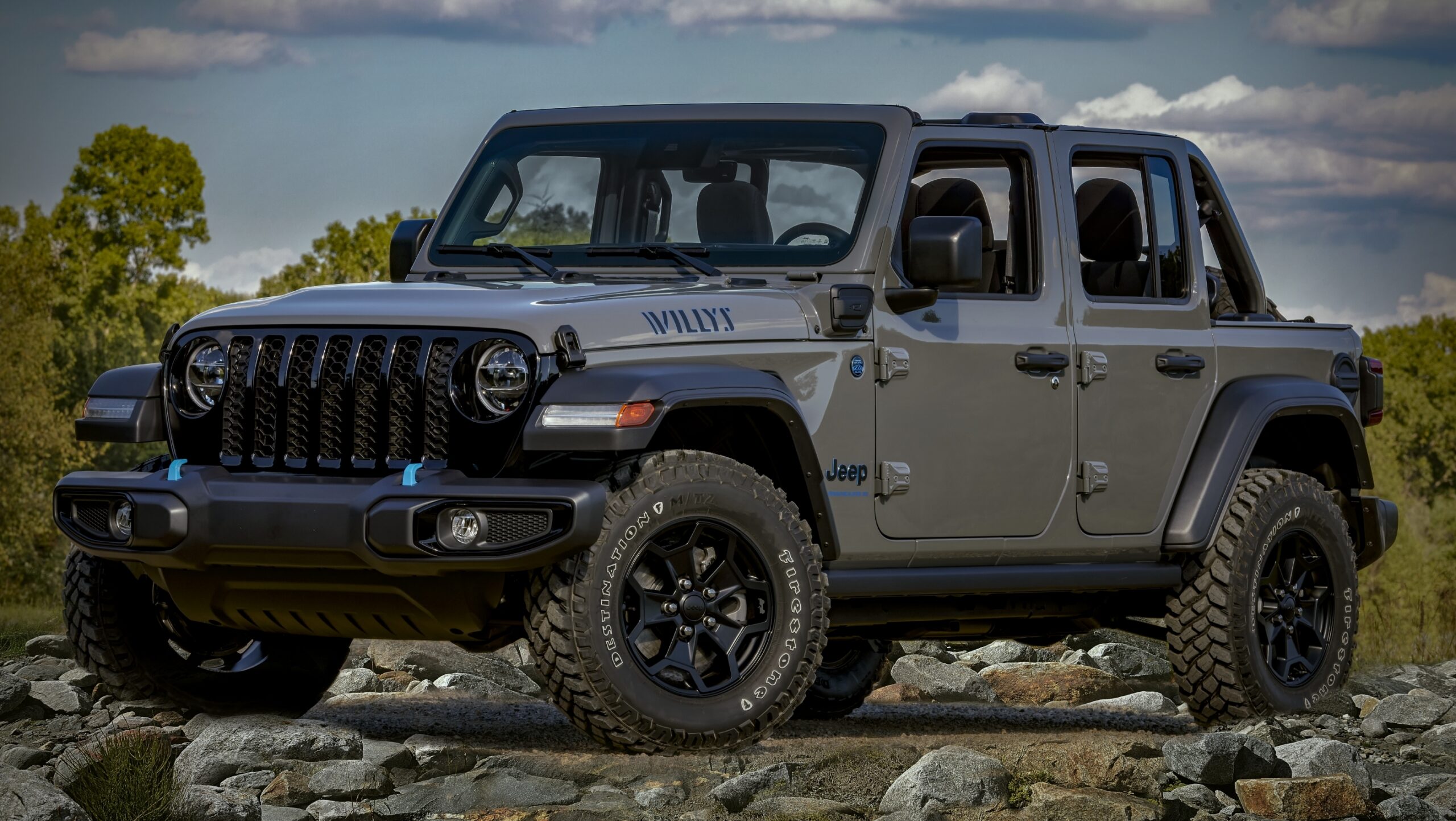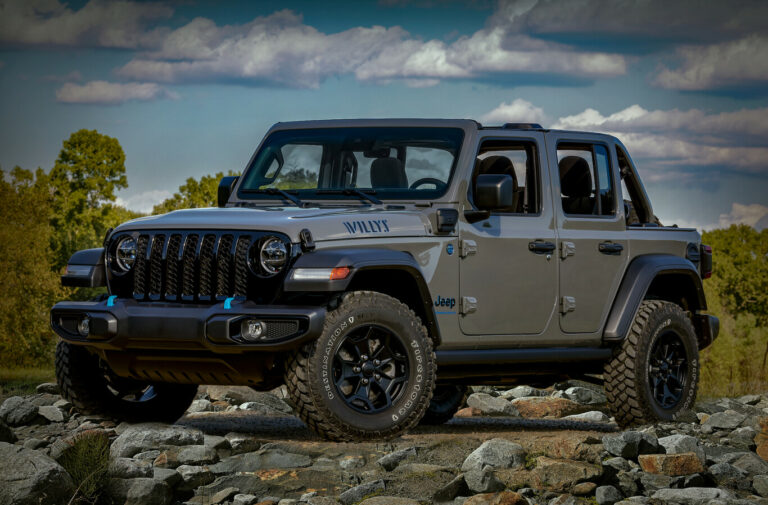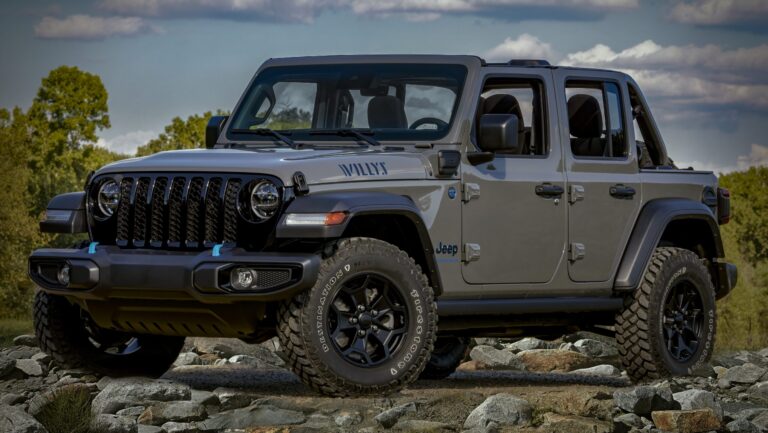Jeep XJ Lift Kit For Sale: Your Ultimate Guide to Elevating Your Cherokee
Jeep XJ Lift Kit For Sale: Your Ultimate Guide to Elevating Your Cherokee jeeps.truckstrend.com
The Jeep Cherokee XJ, produced from 1984 to 2001, holds a legendary status in the off-road community. Known for its unibody construction, durable straight-six engine, and impressive capabilities, the XJ remains a popular choice for enthusiasts looking for a versatile and capable platform. While formidable in stock form, many XJ owners dream of taking their rig to new heights – literally. This is where a Jeep XJ lift kit for sale enters the picture, transforming a capable SUV into an even more commanding off-road machine.
A lift kit for your Jeep XJ is not just about aesthetics; it’s a fundamental modification that enhances ground clearance, allows for larger tires, and significantly improves articulation and off-road performance. Whether you’re navigating challenging trails, tackling rocky terrain, or simply want a more aggressive stance, investing in the right lift kit is paramount. This comprehensive guide will walk you through everything you need to know about purchasing, understanding, and installing a lift kit for your beloved Jeep XJ.
Jeep XJ Lift Kit For Sale: Your Ultimate Guide to Elevating Your Cherokee
Why Lift Your XJ? Benefits and Purposes
Lifting your Jeep XJ offers a multitude of advantages that go beyond just making it look tougher. Understanding these benefits will help you determine the right lift for your specific needs:
- Increased Ground Clearance: This is perhaps the most obvious benefit. A higher suspension means more space between your differentials, transfer case, and frame rails, and the ground. This drastically reduces the chances of scraping, high-centering, or damaging vital components when traversing obstacles like rocks, logs, or deep ruts.
- Accommodate Larger Tires: Stock XJs are limited to relatively small tires. Lifting your Cherokee opens up the possibility of running larger diameter tires (e.g., 31-inch, 33-inch, or even 35-inch+), which provide a larger contact patch for improved traction, better approach/departure angles, and increased overall height.
- Improved Articulation and Suspension Travel: Many quality lift kits include longer shocks, new springs, and sometimes longer control arms that allow your suspension to move more freely and independently. This increased articulation means your wheels can maintain contact with uneven terrain more effectively, improving traction and stability in challenging off-road scenarios.
- Aggressive Aesthetic and Stance: Let’s be honest, a lifted XJ just looks cooler. The elevated stance, coupled with larger tires, gives the Cherokee a more imposing and capable presence on and off the road, reflecting its true adventurous spirit.
- Better Approach, Departure, and Breakover Angles: Lifting the vehicle inherently improves these critical off-road angles, allowing you to climb steeper obstacles and descend more gracefully without body damage.

Understanding Lift Kit Components
A "Jeep XJ lift kit" isn’t a single part but a collection of specialized components designed to work in harmony. The specific parts included will vary based on the lift height and kit quality, but here are the most common elements you’ll encounter:
- Coil Springs (Front): These replace your stock front coil springs to provide the desired lift height and often improved ride quality.
- Leaf Springs (Rear): For the rear, full leaf spring packs are ideal for lift and load carrying, though "add-a-leaf" (AAL) or shackle relocation brackets are also used for smaller lifts.
- Shock Absorbers: Longer shocks are essential to accommodate the increased suspension travel. Many kits come with matched shocks tuned for the new spring rates.
- Track Bar (Adjustable): Lifting the XJ shifts the front axle to one side. An adjustable track bar is crucial to re-center the axle and prevent steering issues.
- Control Arms (Upper & Lower): These link the axle to the frame. For lifts over 3 inches, longer (or adjustable) control arms are often necessary to correct caster angles and prevent binding, improving ride quality and handling. Long-arm kits replace the short factory control arms with much longer ones for maximum articulation.
- Sway Bar Disconnects: These allow you to easily disconnect your front sway bar for increased articulation off-road, then reconnect for safe on-road driving.
- Brake Line Extensions: Longer brake lines may be required to prevent stretching or breaking at full suspension droop.
- Transfer Case Drop Kit (TC Drop): For lifts typically over 2.5-3 inches, a TC drop lowers the transfer case slightly to correct driveline angles and reduce vibrations.
- Slip Yoke Eliminator (SYE) & CV Driveshaft: For 4+ inch lifts, an SYE kit converts your transfer case output, allowing for a constant velocity (CV) driveshaft. This is the most effective way to eliminate driveline vibrations and prevent driveshaft failure at extreme angles.
- Bump Stop Extensions: These prevent your tires from rubbing against the fender wells at full compression.
- U-Bolts: Longer U-bolts are needed for the rear leaf springs.
Types of XJ Lift Kits Available
The market for Jeep XJ lift kits is vast, offering solutions for every budget and performance goal. They are generally categorized by lift height and complexity:
-
Budget Boosts / Spacer Lifts (1-2 inches):
- Components: Coil spacers for the front, add-a-leafs or shackles for the rear. Often reuses stock shocks.
- Pros: Most affordable, easiest to install, good for minor tire clearance and a slightly taller stance.
- Cons: Minimal performance gain, retains stock ride quality (which can be stiff if shocks are worn), limited articulation.
- Ideal For: Owners on a tight budget who want to clear 30-31 inch tires and do light trails.
-
Entry-Level Full Kits (2.5-3.5 inches):
- Components: New coil springs, full leaf springs or add-a-leafs/shackles, new shocks, possibly a TC drop, and sometimes a fixed lower control arm.
- Pros: Good balance of cost and performance, noticeable improvement in ground clearance and articulation, can clear 31-32 inch tires.
- Cons: May require an adjustable track bar, potential for minor driveline vibrations (hence the TC drop).
- Ideal For: Weekend warriors looking for a capable trail rig without breaking the bank.
-
Mid-Travel Kits (3.5-4.5 inches):
- Components: New coil springs, full leaf springs, longer shocks, adjustable track bar, often adjustable upper and lower control arms, sway bar disconnects, brake line extensions, and typically require a TC drop or SYE.
- Pros: Significant increase in performance, clears 32-33 inch tires easily, much better articulation and ride quality.
- Cons: More expensive, installation is more complex, almost certainly requires driveline modifications (SYE recommended).
- Ideal For: Serious off-road enthusiasts tackling moderate to difficult trails.
-
Long-Arm Kits (4.5+ inches):
- Components: Everything from mid-travel kits, but with significantly longer control arms that mount further back on the unibody. Often includes a new crossmember, SYE, and custom driveshaft.
- Pros: Maximum articulation, superior ride quality on and off-road, eliminates control arm angle issues, clears 33-35 inch+ tires.
- Cons: Most expensive, requires welding and fabrication for installation, major driveline modifications, can impact steering geometry.
- Ideal For: Dedicated rock crawlers and extreme off-roaders who demand the absolute best performance and are willing to invest heavily.
Key Considerations Before Buying Your Jeep XJ Lift Kit
Purchasing a lift kit is a significant investment. Take the time to consider these factors to ensure you choose the right kit for your needs:
- Desired Lift Height & Tire Size: What size tires do you ultimately want to run? This will largely dictate the lift height you need. For example, 31s usually fit with 3 inches, 33s with 4.5 inches, and 35s typically require 6+ inches and fender trimming.
- Budget: Lift kits range from a few hundred dollars to several thousand. Factor in not just the kit cost, but also potential additional parts (driveshafts, steering upgrades), installation costs if not DIY, and alignment.
- Intended Use: Is your XJ a daily driver that sees occasional trails, or a dedicated off-road rig? This impacts component durability and ride quality needs. A kit optimized for articulation might compromise on-road manners.
- Installation Difficulty: Some kits are bolt-on, while others require cutting, welding, and specialized tools. Be honest about your mechanical skills and available resources.
- Additional Modifications: Be aware that larger lifts often necessitate other upgrades:
- Driveshaft: SYE/CV driveshaft for lifts over ~3 inches.
- Steering: Drop pitman arm, stronger tie rod and drag link.
- Brakes: Extended lines, potentially upgraded calipers/rotors for larger tires.
- Gearing: Larger tires put more strain on your drivetrain. Re-gearing your axles might be necessary to restore lost power and optimize performance.
- Brand Reputation and Quality: Research reputable brands like Old Man Emu (OME), Rubicon Express, Rough Country, TeraFlex, BDS Suspension, MetalCloak, and Zone Offroad. Read reviews and look for kits with good warranties and customer support.
Where to Find Jeep XJ Lift Kits For Sale
The market is flooded with options, both new and used. Here are the best places to start your search:
- Online Retailers:
- Quadratec, ExtremeTerrain, 4 Wheel Parts, Morris 4×4 Center: These are dedicated off-road parts retailers with extensive selections, competitive pricing, and often offer free shipping or discounts.
- Amazon, eBay: Good for budget options or individual components, but verify seller reputation and product authenticity.
- Manufacturer Websites: Buying directly from brands like Rough Country, Old Man Emu (via ARB distributors), or Rubicon Express ensures you get genuine parts and direct support.
- Local Off-Road Shops: Support local businesses! They can offer personalized advice, installation services, and sometimes even package deals.
- Used Market:
- Craigslist, Facebook Marketplace: You can find great deals on used kits, but exercise caution. Inspect components thoroughly for damage, wear, or missing parts. Ask about mileage and reason for selling.
- Jeep Forums & Facebook Groups: Enthusiast communities often have "for sale" sections where members sell used parts. This can be a good source as sellers are often more knowledgeable and transparent.
Installation Tips and Potential Challenges
Installing a lift kit can be a rewarding DIY project, but it requires patience, the right tools, and an understanding of potential hurdles.
- Safety First: Always use sturdy jack stands, wheel chocks, and proper lifting techniques. Never work under a vehicle supported only by a jack.
- Tools: You’ll need a comprehensive set of metric and standard wrenches and sockets, a torque wrench, breaker bar, pry bar, cutting tools (grinder, Sawzall) for stubborn bolts, and a good floor jack.
- Rust is Your Enemy: XJs are notorious for rust, especially on suspension bolts. Soak all nuts and bolts with penetrating oil (like PB Blaster) days in advance. Be prepared for seized bolts that may require heat or cutting.
- Driveshaft Vibrations: After lifting, the angles of your driveshaft change, which can cause vibrations. A transfer case drop kit is a common initial fix, but an SYE and CV driveshaft are the ultimate solution for lifts over ~3 inches.
- Steering Correction: Lifts affect steering geometry. An adjustable track bar is essential. For higher lifts, consider a drop pitman arm and potentially an upgraded steering system (e.g., "over-the-knuckle" steering) for durability and better handling.
- Alignment: Crucial after any suspension modification. Get a professional alignment immediately after installation to ensure proper caster, camber, and toe settings, which are vital for safety and tire wear.
- Bump Stop Extension: Don’t forget to extend your bump stops to prevent tires from contacting the fender wells during suspension compression.
- Brake Line Length: Verify your brake lines have enough slack at full droop. If not, extended lines are a must.
- Professional Help: If you encounter significant rust, don’t have the right tools, or feel overwhelmed, don’t hesitate to take your XJ to a reputable off-road shop for installation. It’s better to pay for expertise than to risk damage or injury.
Practical Advice and Actionable Insights
- Define Your Mission: Before you even look at a kit, clearly define what you want your XJ to do. This will narrow down your choices significantly.
- Set a Realistic Budget: Don’t just budget for the kit. Include new tires, alignment, potential driveline/steering upgrades, and tools.
- Research, Research, Research: Read reviews, watch installation videos, and join XJ-specific forums. Learn from others’ experiences.
- Don’t Skimp on Critical Components: Shocks, springs, and an adjustable track bar are fundamental. Investing in quality here pays off in ride comfort and durability.
- Consider the "System": A lift kit is part of a larger system. Think about how it interacts with your tires, steering, and driveline.
- Future-Proof (if possible): If you plan to go bigger later, sometimes it’s more cost-effective to buy a slightly larger kit now than to upgrade twice.
- Take Your Time: Rushing through installation can lead to mistakes. Double-check everything.
Jeep XJ Lift Kit Price Table (Estimated)
Please note: Prices are highly variable based on brand, components included, sales, and market conditions. These are general estimates for complete kits.
| Lift Height (Inches) | Kit Type/Description | Typical Components Included | Estimated Price Range (USD) | Common Tire Size Clearance (Approx.) |
|---|---|---|---|---|
| 1.5 – 2.5 | Budget Boost / Spacer Lift | Front coil spacers, rear shackles/add-a-leafs, (sometimes) shock extenders. Often reuses stock shocks. | $150 – $400 | 29" – 30" (with minor trimming) |
| 2.5 – 3.5 | Entry-Level Full Kit | New front coil springs, rear full leaf springs or AAL/shackles, new shocks, (often) TC drop kit, (sometimes) fixed lower control arms. | $400 – $900 | 30" – 31" (32" with trimming) |
| 3.5 – 4.5 | Mid-Travel Performance Kit | New front coil springs, full leaf springs, performance shocks, adjustable track bar, adjustable upper/lower control arms, sway bar disconnects, brake line extensions. | $900 – $1,800 | 31" – 33" (33" may require trimming) |
| 4.5 – 6.5+ | Long-Arm System / Advanced Performance | All components of mid-travel, but with long control arms & new crossmember, heavy-duty shocks, SYE kit, often requires new driveshaft. | $1,800 – $4,000+ | 33" – 35"+ (often requires trimming) |
Note: These prices do not include installation costs, alignment, new tires, re-gearing, or other potential ancillary modifications (e.g., heavy-duty steering, axle upgrades).
Frequently Asked Questions (FAQ) About Jeep XJ Lift Kits
Q1: How much lift do I need for 33-inch tires on my XJ?
A1: Generally, a 4.5-inch lift is recommended for 33-inch tires on an XJ. Some owners can fit them with a 3.5-inch lift with aggressive trimming of the fenders and extended bump stops, but 4.5 inches provides better clearance and articulation.
Q2: Do I need a Slip Yoke Eliminator (SYE) and a new driveshaft?
A2: For lifts 3 inches and above, an SYE and CV driveshaft are highly recommended to prevent driveline vibrations and extend the life of your transfer case. For 2.5-3 inch lifts, a transfer case drop kit might suffice, but an SYE is the ultimate solution.
Q3: Will lifting my XJ affect its ride quality?
A3: Yes, it can. A well-designed lift kit with quality springs and shocks can actually improve ride quality over a worn-out stock suspension. However, very stiff springs or budget kits might make the ride harsher. Long-arm kits often improve ride quality significantly due to better geometry.
Q4: How long does it take to install a Jeep XJ lift kit?
A4: For a typical 3-4.5 inch kit, a skilled DIY mechanic with proper tools and no major rust issues might take 8-16 hours over a weekend. If rust is severe or specialized tools are needed, it could take much longer, or you might opt for professional installation, which typically takes 1-2 full days.
Q5: Do I need new control arms with my lift kit?
A5: For lifts up to 3 inches, stock control arms might work, but adjustable lower control arms are recommended to correct caster. For lifts 3.5 inches and above, adjustable upper and lower control arms are highly recommended to properly set caster and pinion angles, improving handling and preventing driveline issues. Long-arm kits replace them entirely.
Q6: What about steering upgrades after a lift?
A6: With a lift, especially 3.5 inches and above, a drop pitman arm is often included to help correct steering geometry. For larger tires and more aggressive off-roading, upgrading your tie rod, drag link, and possibly the steering box brace or even an "over-the-knuckle" (OTK) steering system is advisable for durability and precision.
Q7: Is a budget boost enough for light off-roading?
A7: Yes, a budget boost can be sufficient for light trails, fire roads, and gaining tire clearance for 30-31 inch tires. However, it won’t offer the same articulation or performance improvements as a full suspension lift.
Conclusion
Finding the right Jeep XJ lift kit for sale is an exciting journey that opens up a world of new possibilities for your beloved Cherokee. By understanding the different types of kits, their components, and the critical considerations involved, you can make an informed decision that perfectly aligns with your off-roading ambitions and budget. Remember to prioritize safety during installation, factor in all potential ancillary costs, and don’t hesitate to seek professional help if needed. A well-chosen and properly installed lift kit will not only transform the appearance of your XJ but also elevate its legendary off-road capabilities, ensuring countless adventures for years to come. Happy wheeling!



